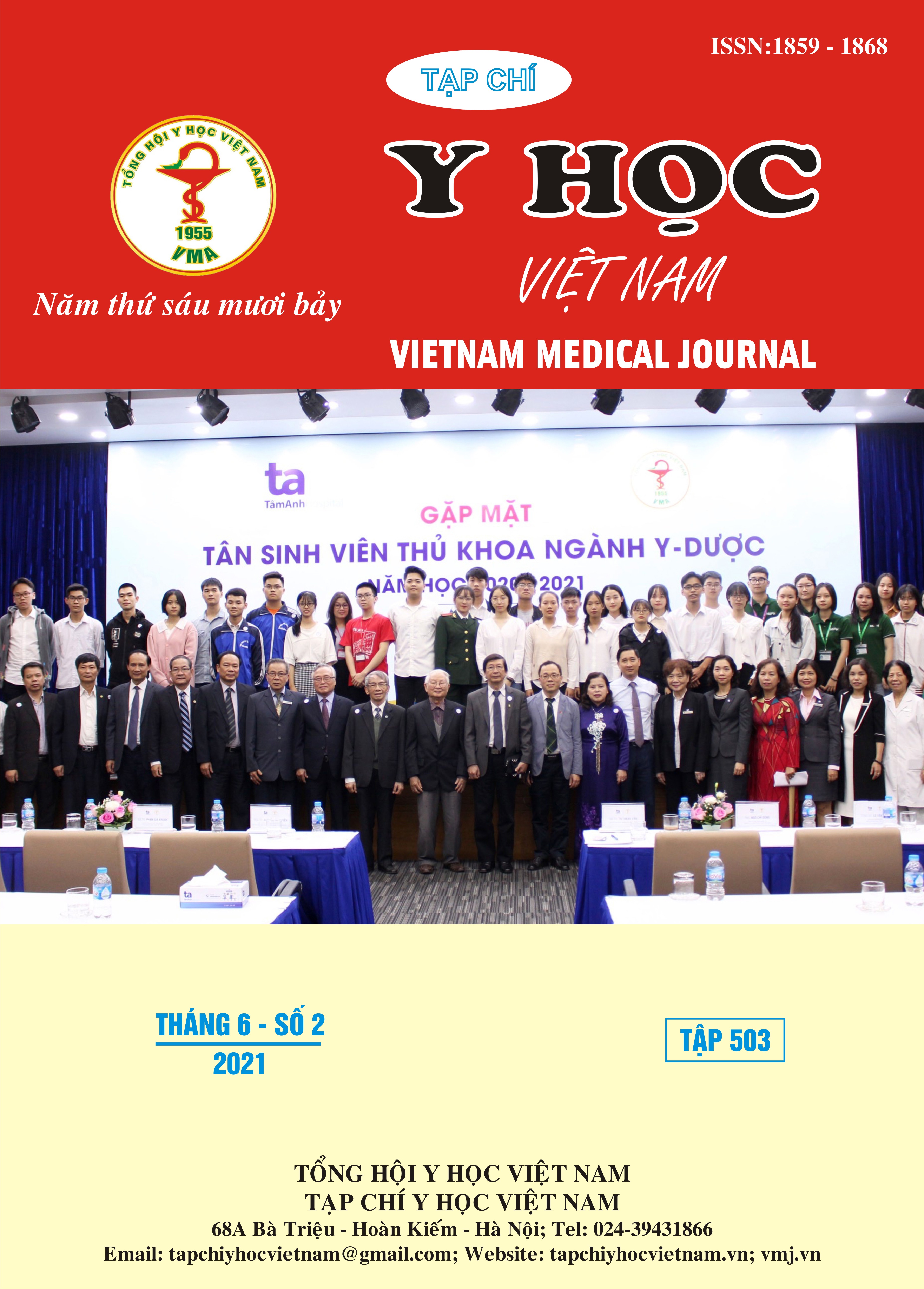RESEARCH VALUE OF THE SEOUL PNEUMONIA SCALE IN PATIENTS PNEUMONIA SECONDARY TO ACUTE STROKE AT STROKE CENTER PHU THO
Main Article Content
Abstract
Background: Survey value of Seoul pneumonia score in patients with brain stroke in the acute stage. Subjects and Methods: Including 65 first-time stroke patients admitted to the hospital for inpatient treatment at the Stroke Center - Phu Tho Provincial Hospital from November 2020 to March 2021. Diagnosis of nosocomial pneumonia according to the Guidelines for diagnosis and treatment of respiratory diseases issued by the Ministry of Health in 2012. Research was conducted according to the method of prospective, descriptive statistics. Results: Average age is 62,0±11,5, male/female ratio: 2/1, average NIHSS score 8,2 ± 6,5 and patients with mechanical ventilation 7,3%. Nosocomial pneumonia ratio 13,5%. In patients with hemorrhagic stroke, with mechanical ventilation, Severe disorders of consciousness (Glasgow < 9), moderate to severe stroke (NIHSS≥ 15) had a much higher rate of pneumonia with p< 0,001; There was no relationship between age, sex and blood pressure level with the incidence of nosocomial pneumonia in stroke patients. The rate of pneumonia was lowest in patients with a score of Seoul pneumonia (VPS) = 0 (0%), The rate of pneumonia was highest in patients with a score of Seoul pneumonia (VPS) = 5 (83,33%). Conclusion: In patients with acute stroke, nosocomial pneumonia take 13.5%. There is an association between hemorrhagic stroke, mechanical ventilation, Severe disorders of consciousness, moderate to severe stroke and the rate of nosocomial pneumonia. VPS score has the ability to predict pneumonia with high specificity but low sensitivity.
Article Details
Keywords
stroke, nosocomial pneumonia, VPS scale
References
2. Kwon HM, Jeong SW, Lee SH, Yoon BW (2006), "The pneumonia score: a simple grading scale for prediction of pneumonia after acute stroke", Am J Infect Control, 34(2), pp:64-68.
3. Bộ Y Tế (2012), "Hướng dẫn chẩn đoán và điều trị viêm phổi mắc phải ở bệnh viện, viêm phổi liên quan đến thở máy, viêm phổi liên quan chăm sóc y tế", Hướng dẫn chẩn đoán và điều trị bệnh hô hấp, Nhà xuất bản Y học, pp: 40-48.
4. Kissela BM, Khoury JC, Alwell K et al (2012), "Age at stroke: temporal trends in stroke incidence in a large, biracial population.", Neurology, 79(17), pp:1781-1787.
5. Appelros P, Stegmayr B, Terént A (2009), "Sex differences in stroke epidemiology: a systematic review", Stroke, 40(4), pp:1082- 1090.
6. Cugy E, Sibon I (2017), "Stroke-Associated Pneumonia Risk Score: Validity in a French Stroke Unit.", J Stroke Cerebrovasc Dis, 26(1), pp:225-229.
7. Smith C.J., Kishore A.K., Vail A. et al (2015), "Diagnosis of Stroke-Associated Pneumonia", Stroke, 46(8), p. 2335-2340.
8. Papavasileiou V, Milionis H, Smith CJ et al (2015), "External Validation of the Prestroke Independence, Sex, Age, National Institutes of Health Stroke Scale (ISAN) Score for Predicting Stroke-Associated Pneumonia in the Athens Stroke Registry.", J Stroke Cerebrovasc Dis, 24(11), pp:2619-2624.


